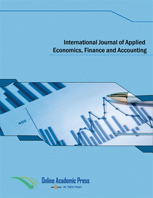The impact of exchange rate changes on the trade balance: Evidence from Saudi Arabia vs her major trading partners
DOI:
https://doi.org/10.33094/ijaefa.v16i1.888Keywords:
ARDL model, Bilateral trade balance, J-curve, Real exchange rate.Abstract
This study aims to analyse the short- and long-term effects of real exchange rate changes on the bilateral trade balance between Saudi Arabia and its major trading partners. The study used the aggregated and disaggregated panel data for the analysis. The autoregressive distributed lag (ARDL) model in error correction is used to analyse the short and long-term relationship between exchange rate and trade balance. It was discovered that the real exchange rate (RER) had no appreciable impact on the trade balance over the long run using the panel data linear ARDL model. The first leg of RER is determined to have a very negative short-term impact on the trade balance. However, the non-linear ARDL model, which took into account non-linear trade balance adjustments in reaction to exchange rate fluctuations, demonstrated a significant and adverse long-term link between the two variables. It shows that depreciation leads to the deterioration of the trade balance. Finally, the study extends the analysis to disaggregated data country-wise. The results of the linear ARDL model revealed that 3 out of 13 cases have significantly short-term relationships. Still, it is observed that no specific short-term patterns are in line with the J-curve hypothesis. The investigation discovered evidence for the J-Curve and the new definition of the J-curve using the non-linear ARDL model in three of the 13 cases. The study concluded that Saudi Arabia must not rely on devaluation as a policy instrument to improve its trade balance. It should maintain its fixed exchange rate for extended periods.
Downloads
Published
Issue
Section

This work is licensed under a Creative Commons Attribution-NonCommercial 4.0 International License.




